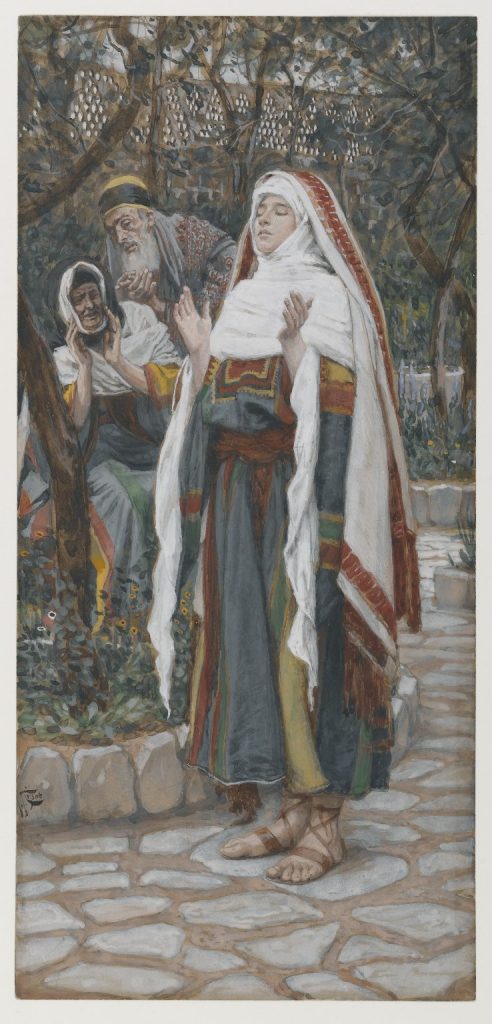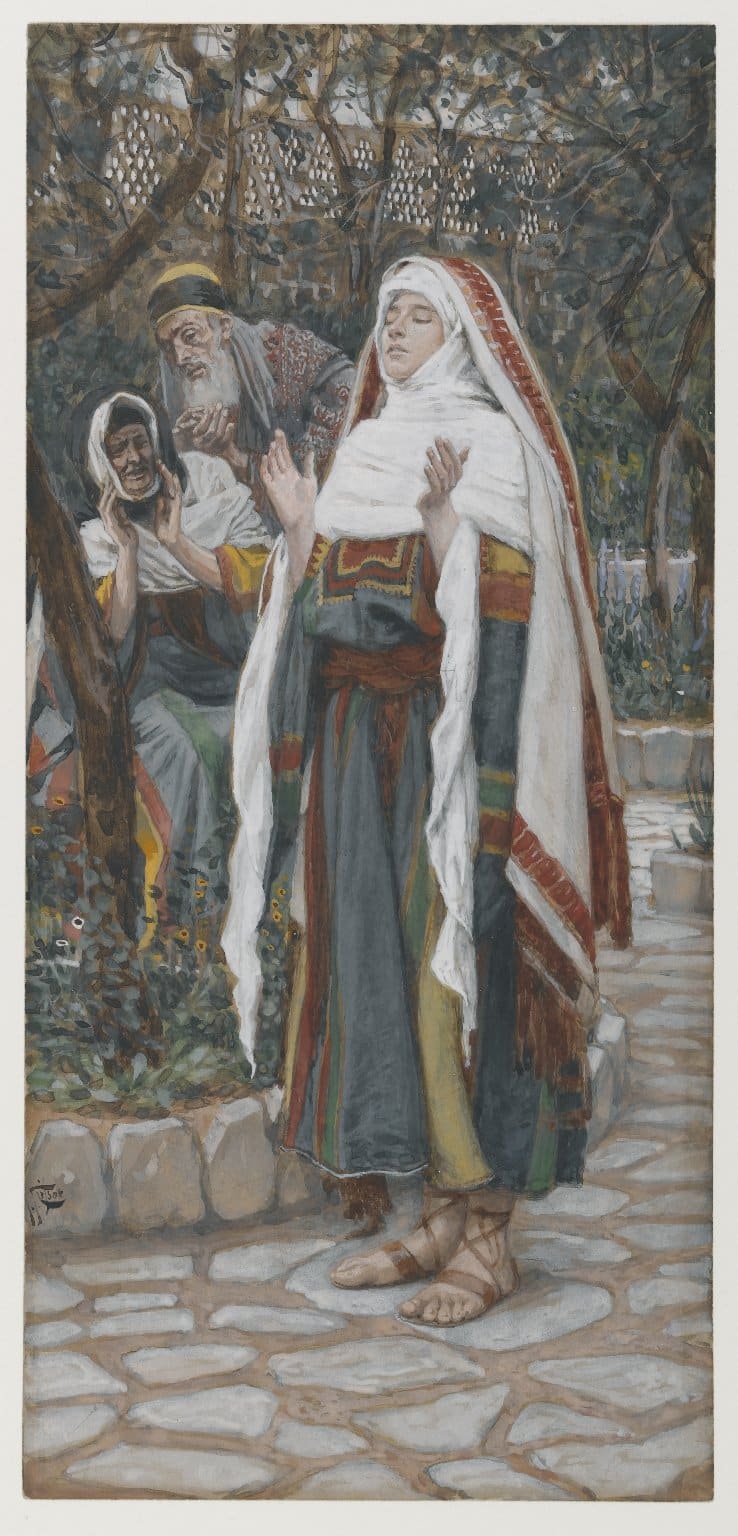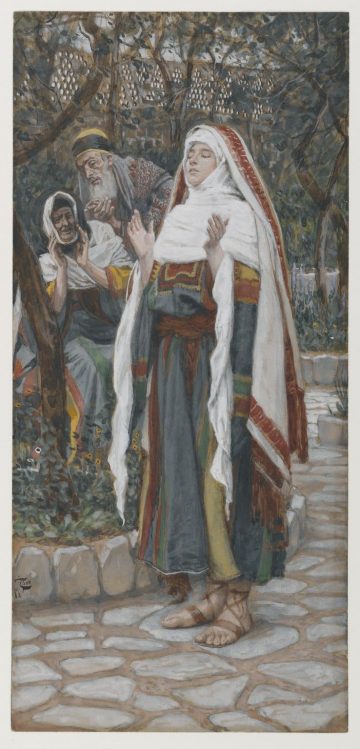
Last year, I was charged with planning the Christmas program of my local ward of the Church of Jesus Christ of Latter-day Saints (LDS). (You can see my final script here.) As I studied the gospel of Luke, choosing scriptures to include in the program, I noticed verses that I couldn’t recall being included in any of the ward Christmas programs I have attended.
The Annunciation usually gets attention in LDS Christmas programs, as it should.
…The angel Gabriel was sent from God unto a city of Galilee, named Nazareth
And the angel came in unto [Mary], and said, Hail, thou that art highly favoured, the Lord is with thee: blessed art thou among women.
And when she saw him, she was troubled at his saying, and cast in her mind what manner of salutation this should be. (Luke 1:26-29)
Mary is troubled—in what way? Gabriel assumes she is scared and responds by saying, “Fear not.” (Luke 1:30)
But Mary’s first words after the angel tells her she will be the mother of Jesus were not the incoherent ramblings of someone quaking in fear, but a perfectly rationale logistical question, “How shall this be, seeing I know not a man?” (Luke 1:34)
After the angel explains, Mary makes her decision:
And Mary said, Behold the handmaid of the Lord; be it unto me according to thy word. (Luke 1:38)
Her choice is an act of bravery and strength, but it is also submissive, a trait that is too often stereotyped as feminine and inequitably mandated of women, not men.
However, if we continue reading that same chapter, we see Mary defying stereotypes as she gives a powerful sermon. Within other Christian faiths, this sermon is called the Magnificat and is a staple of Christmas programs. Within ours, it is often skipped.
And Mary said, My soul doth magnify the Lord,
And my spirit hath rejoiced in God my Saviour.
For he hath regarded the low estate of his handmaiden: for, behold, from henceforth all generations shall call me blessed.
For he that is mighty hath done to me great things; and holy is his name.
And his mercy is on them that fear him from generation to generation.
He hath shewed strength with his arm; he hath scattered the proud in the imagination of their hearts.
He hath put down the mighty from their seats, and exalted them of low degree.
He hath filled the hungry with good things; and the rich he hath sent empty away.
He hath [helped] his servant Israel, in remembrance of his mercy;
As he spake to our fathers, to Abraham, and to his seed forever. (Luke 1:46-55)
This may be the longest discourse by a woman recorded in scripture. Mary calls out the proud and powerful, demonstrates her knowledge of doctrine and prophecy, and testifies with confidence. The Magnificat shows us another side of Mary, less submissive and meek, more bold. I included it in its entirety in my ward Christmas program.
I also included the prophet Anna, who met the Christ child long before the wise men did but somehow usually gets skipped. As I was studying Anna, Luke’s introduction of her stood out to me, and not in a good way:
And there was one Anna, a prophetess, the daughter of Phanuel, of the tribe of Aser: she was of a great age, and had lived with an husband seven years from her virginity; And she was a widow of about fourscore and four years, which departed not from the temple, but served God with fastings and prayers night and day. (Luke 2:36-37)
She was a prophet of God and over ninety years old and yet her ancient male peers felt it necessary to speculate about her sexual history? Could you imagine someone introducing an elderly male prophet like President Nelson by announcing how many years ago he had been a virgin?
For my program, I put ellipses in that part. Anna was a prophet who served God with fasting and prayer. That is all we need to know. The chapel is not the place to fetishize about women’s sexual histories.
In accordance with the same principle, I excluded talk about Mary’s virginity, although her status as a virgin is often seen as integral to the nativity story in a way that Anna’s is not.
Christ coming to earth to save us from our sins is a miracle, whatever the sexual history of his mother. And there is so much more we can say about Mary than that.






2 Responses
If you want to read a fascinating paper about Mary and other early Christian women, take a look at this link. It is free on Kindle. When you consider that Mary was most likely in her teens when she gave birth to Jesus, it is even more remarkable that she knew so much.
Mary and Early Christian Women: Hidden Leadership https://www.amazon.com/dp/B07NZT14J3/ref=cm_sw_r_cp_apa_i_Rbe.DbRVXJPCY
April thank you for giving Anna a shout out. Everyone mentions Simeon but skips Anna. I remember one old church video showed her as a scary old hag! And the Magnificat is such a gorgeous testimony, so reminiscent of Hannah’s prayer.